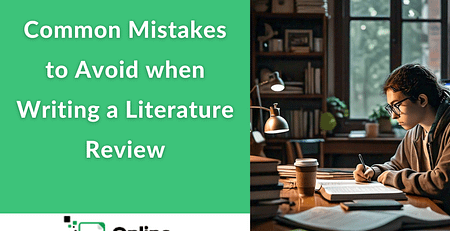From Paragraphs to Prose: Weaving Words into Winning Arguments
From Paragraphs to Prose: Weaving Words into Winning Arguments
Ever felt your argument fizzle out because your writing lacked structure? You’re not alone. Mastering the art of the paragraph is crucial for crafting powerful, persuasive arguments that resonate with your audience. Let’s delve into the world of paragraphs and transform them into weapons in your argumentative arsenal. In this post, we’ll explore the secrets of strong opening sentences, supporting details, and structure, revealing how they elevate your writing from ordinary to impactful. So, buckle up and get ready to turn your paragraphs into prose that wins.
Components of a Strong Paragraph
Forget forgettable fragments! Master the art of the paragraph and unlock your writing’s full potential. More than just a collection of sentences, a strong paragraph is a mini-masterpiece, conveying a single idea with clarity, coherence, and impact. It’s like a well-built sandwich: a topic sentence as the foundation, supporting details as the juicy fillings, and a concluding sentence for a satisfying finish. In this guide, we’ll dissect each component, helping you craft paragraphs that captivate your readers.
Developing Topic Sentences
Topic sentences are like leaders for paragraphs. They start by introducing the main idea. However, they shouldn’t give away everything. Instead, they should give a clear idea of what the paragraph will talk about without revealing too much.
Once the topic sentence sets the stage, the development and support sentences come in. These sentences make up the body of the paragraph. Development sentences go into more detail about the main idea introduced in the topic sentence. They provide specifics that help readers understand the topic better. On the other hand, supporting sentences offer evidence, opinions, or statements that back up the main idea of the paragraph.
When it comes to concluding a paragraph, it’s about wrapping up the idea presented. A conclusion can summarize what was discussed in the paragraph and also transition smoothly to the next paragraph. However, depending on the type of paragraph, it’s also acceptable to end with a final piece of support that solidifies the main thought.
Supporting Ideas with Evidence
When you are trying to make a strong argument, it’s important to back up your ideas with evidence. This means using facts, examples, or experiences to support what you are saying. Each piece of evidence adds strength and credibility to your argument. The arguments need solid evidence to make them convincing. Showing evidence helps readers understand why you think the way you do and why your ideas make sense. This evidence can be things like facts, examples, or quotes. When you mix different types of evidence in your writing, it helps explain your point better and makes readers trust your words.
Whether it’s citing research, sharing personal stories, or pointing to real-world examples, providing evidence helps others understand why our ideas are worth considering. So, when you are crafting winning arguments, remember to weave in plenty of evidence to make your points stand out and persuade others.
There are six types of evidence – anecdotal, statistical, testimonial, textual, analogical, and logical. Each type of evidence is helpful in different ways. Good writing mixes these types to back up different points. When you go through each type, think about when each would be most useful.
Transitions Between Paragraphs
Transitions between paragraphs help to convey the information clearly and concisely. Achieving this goal involves establishing logical connections not only between sentences but also among paragraphs and sections of your paper. These connections guide readers on how to interpret, organize, and respond to the information presented. Whether in the form of single words, quick phrases, or full sentences, transitions act as signals, instructing readers on how to navigate and process both old and new ideas as they progress through your writing.
To enhance the organization of your argument, consider presenting the conventional view first and then offering your critical response. A well-crafted transition between these two key elements informs the reader that the information in paragraph B contradicts that in paragraph A. This approach aids in structuring your argument effectively, and the transition serves as a link that connects these opposing viewpoints.
A well-organized sequence of paragraphs naturally leads from one to the next, and a skillfully placed transition emphasizes the existing relationship. By summarizing the previous paragraph, the transition hints at the upcoming content, creating a seamless flow. Transitions can take the form of a word or two, a phrase, or even a complete sentence. These transitions may appear at the end of the first paragraph, the beginning of the second, or in both locations, reinforcing the coherence and continuity of your writing.
Using Variety in Sentence Structure
Using a variety of sentence structures is important in writing. When you use the same length or type of sentences over and over, it can make your writing boring and hard to read. On the other hand, when you mix up your sentence structures, it keeps the readers interested. You can create variety by changing the length of your sentences, using different levels of complexity, and making intentional choices with punctuation. By doing so, you can enhance the flow and impact of your writing.
Length
The length of sentences is important in writing. Longer ones give more details, allowing readers to understand complex ideas better. Short sentences are more direct and clear, creating excitement. Both types can work well, depending on what you’re writing. For example, long sentences are good for describing things vividly in stories or explaining ideas thoroughly in papers. Short sentences can be useful for summarizing the main points. It’s important to think about what you’re writing and who will read it. Technical writing usually needs short, clear sentences, but using only short ones might make it seem like you can’t write longer ones. It’s best to have a mix of sentence lengths to keep readers interested.
Complexity
Using a variety of sentence structures can be tricky because it involves understanding different ways to put words together. When writing the argument in your thesis, some sentences have lots of details and ideas packed into them. Others are more straightforward. It’s important to balance complex and simple sentences. Mixing up the sentences can make your writing more interesting and engaging. However, it’s important to remember that too much complexity might confuse your readers. So, when playing with sentence structures, it’s good to experiment but also to keep things clear and easy to understand for your readers.
Punctuation
There are several ways to punctuate and combine sentences. It includes periods, commas, coordinating conjunctions, semicolons, and question marks. This tells readers where to pause, where a sentence ends, or where there is a question. Using a variety of punctuation marks makes your writing more engaging. It helps to add rhythm and flow to your sentences.
Using commas and coordinating conjunctions shows how two independent clauses are related to each other. A semicolon can also be used in this way, but it indicates that the two independent clauses or ideas are more closely related. Making careful punctuation choices will enhance the meaning of your writing as well as increase readability.
Final Thoughts
In summary, writing good paragraphs can help you in conveying a clear message to your readers. These paragraphs are built with the help of different arguments, which include developing topic sentences, supporting ideas with sentences, transitioning between paragraphs, and using variety in sentences. However, sentence structure is all about how a sentence looks and how its parts are arranged when writing an argument.
Whether it’s academic essays, professional presentations, or everyday conversations, the ability to form winning arguments can open doors to new opportunities and offer meaningful connections. By structuring paragraphs effectively and crafting prose that is both persuasive and eloquent, individuals can communicate their ideas convincingly.
Online Paper Help offers assistance when providing arguments in your thesis. We will provide all the authentic evidence that will support your arguments. From the start till the end, stay connected with us and make your essay unique and compelling from others. Get help today from the experts at Online Paper Help.












